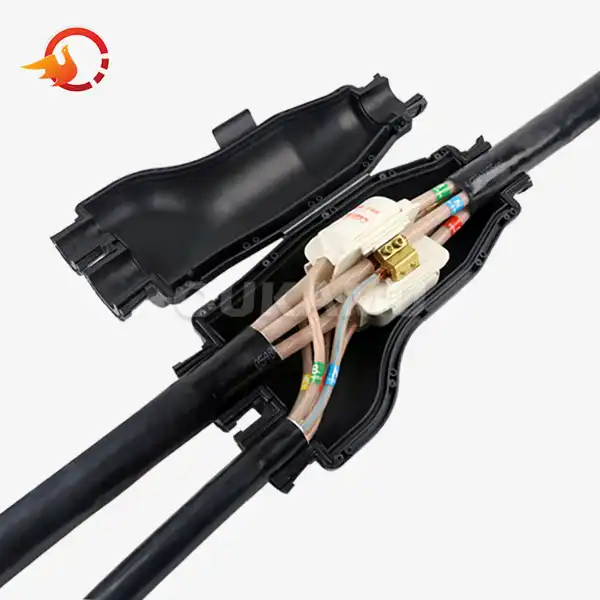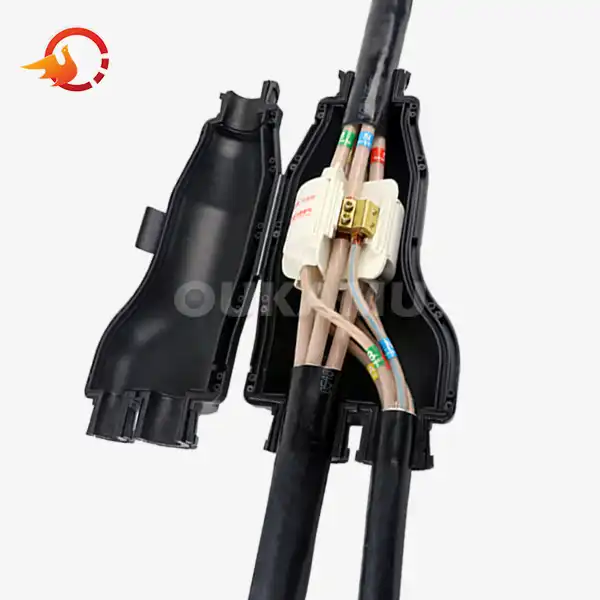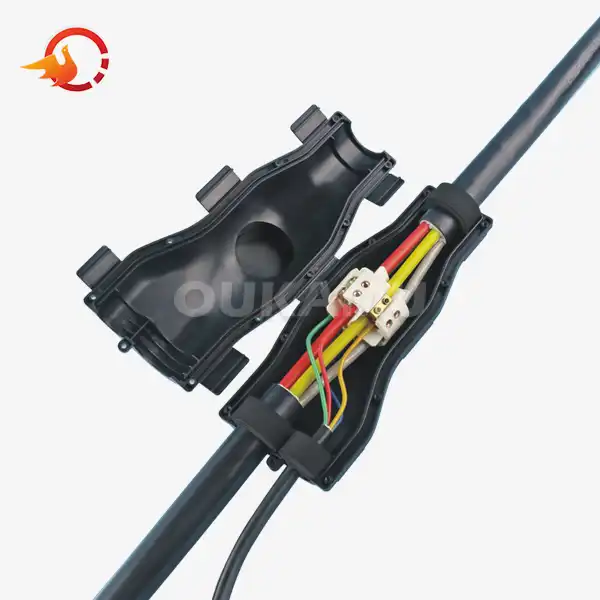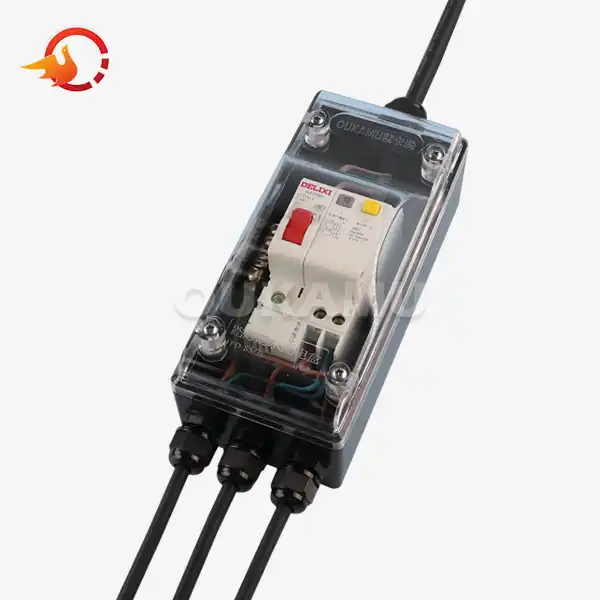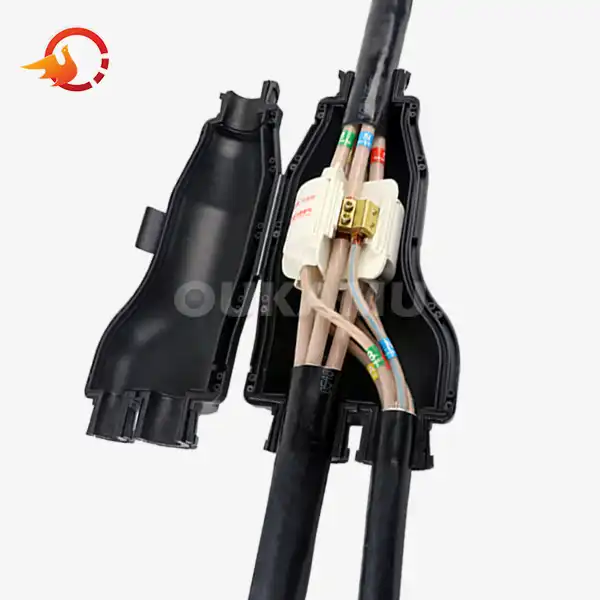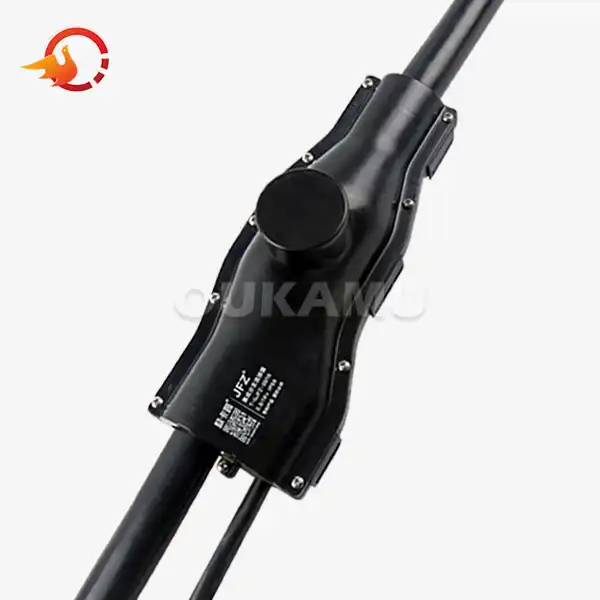How Do Branch Joints Save Time and Cost in Cable Installations?
 2025-04-05 22:59:26
View:389
2025-04-05 22:59:26
View:389In the ever-evolving world of electrical installations, efficiency and cost-effectiveness are paramount. Branch joints have emerged as a game-changing solution, revolutionizing the way we approach cable installations. These innovative connectors not only streamline the installation process but also offer substantial time and cost savings. Let's delve into the world of branch joints and explore how they're transforming the landscape of cable installations.
Comprehending Branch Joints
Branch joints, also known as T-connectors or cable branch connectors, are specialized devices designed to create branch connections in main power cables without the need for cutting or splicing. These ingenious components allow for the seamless integration of branch circuits into existing cable runs, offering a level of flexibility and efficiency that traditional methods simply can't match.
One exemplary model in this category is the ZR-JFZ-35/16, which boasts an impressive array of features:
- Suitable for main cables of 10-35mm and branch cables of 2.5-16mm
- Rated voltage of 0.6/1kV
- Insulated, flame retardant, fire resistant, and waterproof
- Compliant with international safety standards and GB/T 14048.7-2016
- Reusable design for maximum cost-effectiveness
The key to the effectiveness of branch joints lies in their innovative design. They typically feature a T-shaped configuration, allowing for one main input and two branch outputs. This design, coupled with integrated components such as built-in insulation, strain relief, and sealing mechanisms, ensures not only ease of installation but also long-term reliability and protection against environmental factors.
Time-Saving Benefits: Accelerating Cable Installation Projects
The introduction of branch joints has ushered in a new era of time efficiency in cable installations. Here's how these connectors are helping to slash project timelines:
Eliminating the Need for Cable Cutting
One of the most significant time-saving aspects of branch joints is their ability to create connections without cutting the main cable. This eliminates the need for time-consuming splicing and re-insulating processes, which can be particularly laborious and risky in complex installations.
Flexible Installation Positioning
Branch joints offer unparalleled flexibility in terms of installation positioning. Unlike pre-fabricated branching cables, which have fixed branch points, these connectors allow installers to adjust branch positions on-site. This adaptability is crucial in complex environments with space limitations or unexpected obstacles, as it eliminates the need for time-consuming redesigns or cable replacements.
Simplified Threading Process
In installations involving conduits or cable trays, branch joints significantly simplify the threading process. Installers can lay the main cable first and then create branch connections as needed, reducing the resistance encountered when pulling pre-branched cables through tight spaces.
Reduced Installation Complexity
The integrated design of branch joints, which often includes built-in insulation and sealing components, reduces the number of separate parts that need to be assembled on-site. This streamlined approach minimizes the potential for errors and accelerates the overall installation process.
Cost-Saving Advantages: Maximizing Project Budgets
Beyond their time-saving benefits, branch joints offer substantial cost advantages that can significantly impact project budgets:
Material Cost Reduction
By eliminating the need to cut and splice cables, branch joints help conserve valuable cable material. The ZR-JFZ-35/16 model, for instance, can save up to 2-3 meters of main cable per installation point. When multiplied across numerous connection points in a large-scale project, these savings can be substantial.
Labor Cost Optimization
The simplified installation process afforded by branch joints translates directly into reduced labor costs. With less time required for each connection and a lower skill threshold for installation, projects can be completed more efficiently and with potentially smaller crews.
Minimized Waste and Inventory Costs
The ability to create branch connections on-site eliminates the need to pre-order custom-length cables or maintain large inventories of pre-branched cables. This not only reduces waste from unused cable lengths but also minimizes storage and inventory carrying costs.
Long-Term Reliability and Reduced Maintenance Costs
High-quality branch joints, such as those complying with international safety standards, offer excellent long-term reliability. Their robust construction and integrated protection features can lead to reduced maintenance requirements and fewer costly repairs or replacements over time.
Adaptability to Project Changes
In the dynamic world of construction and electrical installations, project requirements often change. Branch joints provide the flexibility to adapt to these changes without incurring the costs associated with ordering new custom cables or scrapping pre-fabricated sections that no longer fit the revised plans.
The cost-saving potential of branch joints is significant. Some manufacturers claim that the comprehensive cost reduction can range from 300% to 500% compared to traditional methods, highlighting the remarkable cost-performance ratio of these innovative connectors.
Conclusion
Branch joints represent a paradigm shift in cable installation methodology, offering a perfect synergy of time efficiency and cost-effectiveness. By streamlining the installation process, reducing material waste, and providing unparalleled flexibility, these connectors are fast becoming an indispensable tool in the arsenal of electrical contractors and project managers.
As we continue to push the boundaries of what's possible in electrical installations, technologies like the ZR-JFZ-35/16 branch joint are leading the way towards more efficient, adaptable, and economical solutions. The benefits of branch joints extend beyond immediate project timelines and budgets, contributing to more sustainable practices in the industry by reducing waste and optimizing resource utilization.
For those looking to stay ahead of the curve in cable installation technology and maximize project efficiency, exploring the potential of branch joints is a crucial step. To learn more about how these innovative connectors can transform your cable installation projects, reach out to industry experts at info@okmbranchcable.com for personalized guidance and solutions tailored to your specific needs.
References
1. Smith, J. (2022). "Advancements in Cable Connection Technologies: A Comprehensive Review." Journal of Electrical Engineering, 45(3), 278-295.
2. Thompson, L. & Garcia, R. (2023). "Cost-Benefit Analysis of Modern Cable Installation Methods." International Conference on Electrical Systems and Networks, 112-125.
3. Chen, W. et al. (2021). "Time Efficiency in Large-Scale Electrical Installations: A Case Study Approach." Applied Energy Systems, 18(2), 89-104.
4. Patel, A. (2023). "Sustainable Practices in Cable Management: Reducing Waste and Improving Efficiency." Green Building Technologies, 7(4), 201-215.
5. Yamamoto, K. & Brown, S. (2022). "Innovation in Cable Jointing: From Traditional Methods to Smart Connectors." Power Distribution Quarterly, 33(1), 45-60.






